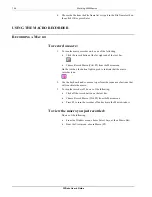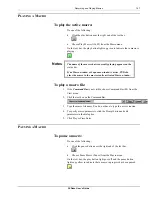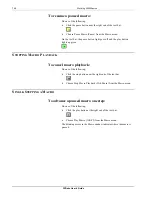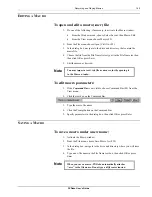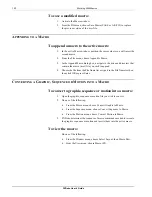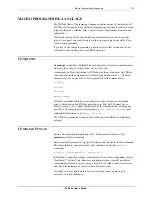
160
Working with Macros
FXDeko User’s Guide
C
OMMENTS
A
comment
is text within a macro that does not affect the function of the macro.
Comments make macros easier to analyze and edit, especially if the macro was
written some time ago or written by another programmer. Many programmers
consider a program incomplete without comments. You may find the same to be
true of your macros.
A single-line comment starts with a pound sign (
#
). FXDeko ignores text to the
right of the pound sign.
# This comment is on a line by itself.
command # This one shares a line with a command.
Another way to create a comment is to precede the comment with
/*
and close it
with
*/
. FXDeko ignores text between
/*
and
*/
. This way, you can create
multiple-line comments.
/* This is a multiple-line comment.
None of this text affects the function
of this macro; FXDeko ignores
every line of it */
C
ONDITIONAL
C
OMMANDS AND
L
OOPS
Conditional commands
instruct FXDeko to execute specific commands only
under certain circumstances. FXDeko supports the conditional commands
if
,
else
and
elseif
.
The
if
command includes a test expression, which evaluates to zero (false) or
non-zero (true). A list of one or more commands, then an
end
command, follows
the
if
command:
if expression=
# commands
end
If the expression is true, FXDeko executes the commands between
if
and
end
.
The
if
command is often used with the
else
command:
if expression=
# commands
else
# commands
end
If the expression is true, FXDeko executes the commands between
if
and
else
; otherwise, the commands between
else
and
end
are executed.
You can introduce more conditional actions by nesting conditions…
if $a==1
Summary of Contents for FXDEKO
Page 8: ......
Page 130: ......
Page 165: ...Macro Programming Language 165 FXDeko User s Guide b integer a 5 b equals 13...
Page 175: ......
Page 210: ......

